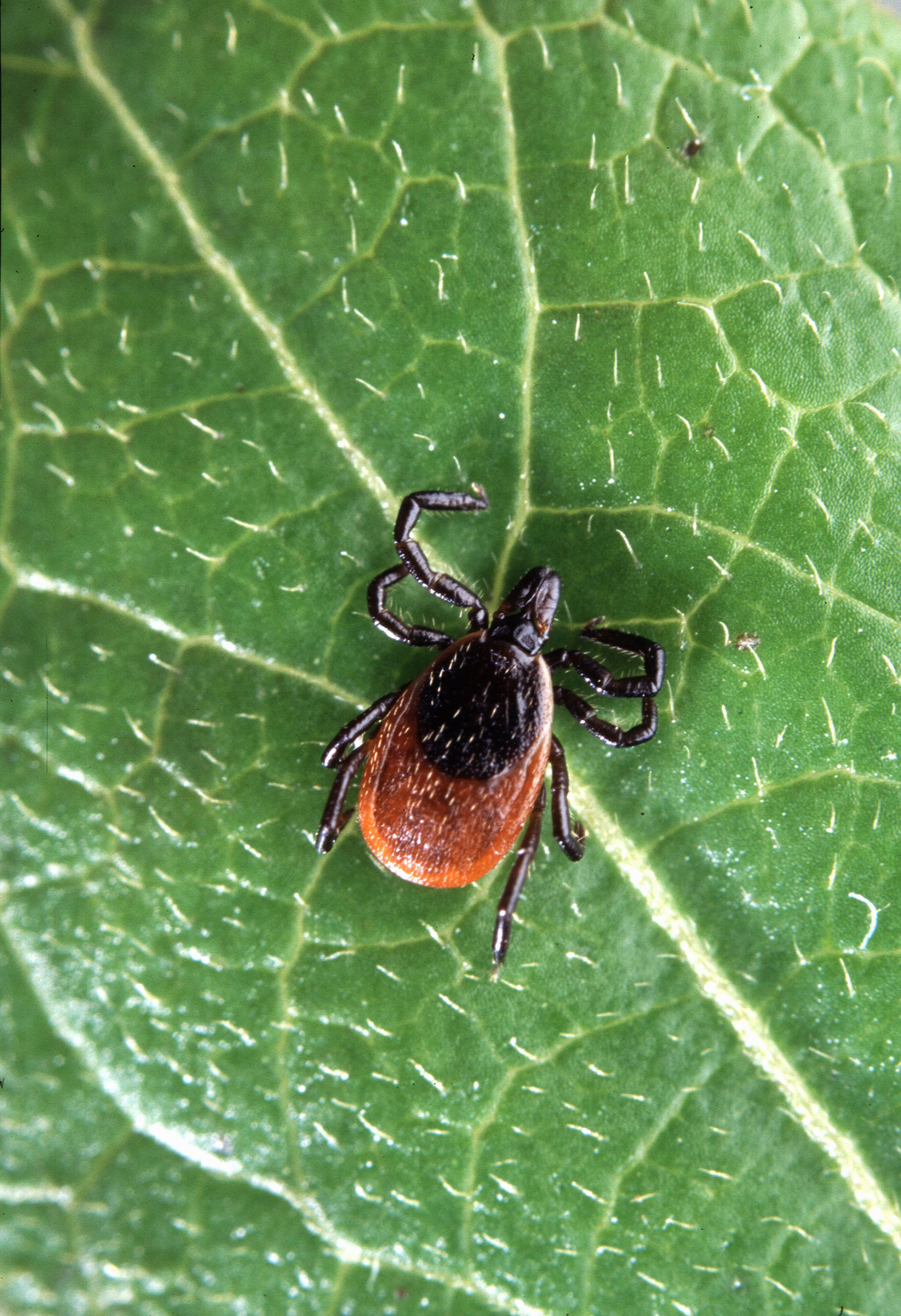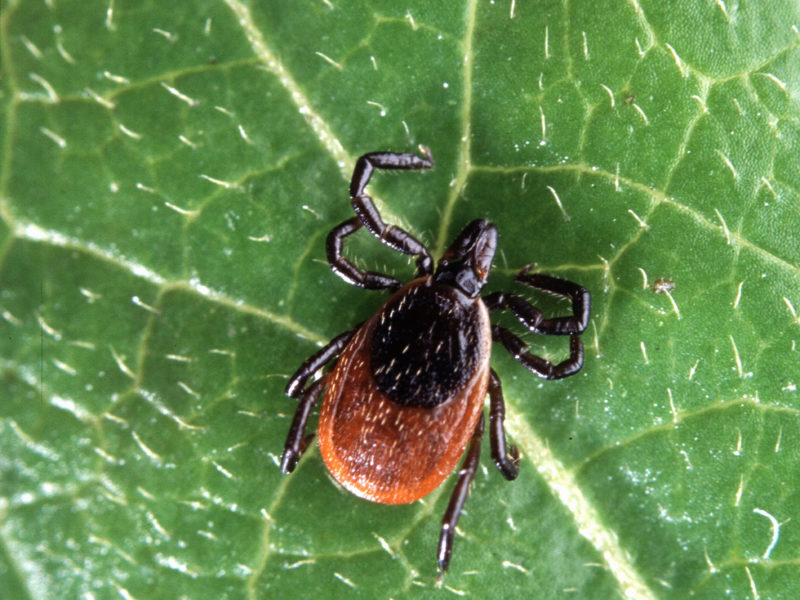
Climate Change Brings More Bugs.
Brown marmorated stink bugs made their way to Michigan in 2017. Although they don’t bite, they are a huge nuisance both inside homes and in fruit orchards and gardens. They also stink. Unfortunately, climbing temperatures could not only bring more pests to our homes and gardens, increased temperatures will expose people to more bug-borne diseases over time because as the planet gets warmer disease-carrying mosquitos will continue to spread farther north increasing exposure to Zika, chikungunya and dengue and other diseases.
Cases of mosquito- and tick-borne diseases in the United States have more than tripled since 2004. According to the World Health Organization every year one billion people are infected by ticks and mosquitos, and one million will die. New studies predict that by the year 2050 the number of people at risk for diseases from mosquitos and ticks will increase by nearly one-half billion.
Ticks.
The Centers for Disease Control indicates that Lyme disease accounts for 82% of all tickborne cases. Ticks bite infected animals and then they bite us. Not all ticks are infected but the longer an infected tick is attached to our body the greater the risk for contracting the disease, which can manifest months after the initial bite as arthritis, peripheral neuropathy and confusion.
Ticks are found in all 50 states. A surveillance map from the CDC shows the reported cases of Lyme Disease between 2012 and 2018 and, well, you’ll just have to see the map for yourself – especially if you are planning a hiking trip to Northeastern United States!
Mosquitos.
Michigan had the worst outbreak of Eastern equine encephalitis in more than a decade during the fall of 2019. Eleven counties reported animals or humans who had been infected by the mosquito-borne virus. And while only approximately 4-5% of those infected would get sick, 1% could develop an illness that causes the brain or surrounding tissues to become inflamed. Approximately 1/3 of these patients could even die.
Therefore the chemical Merus 3.0 was sprayed aerially across Michigan to kill mosquitoes. Officials assured residents that according to the manufacturer this product contained “natural pyrethrin,” which is “derived from chrysanthemum flowers in Africa.” However, the label also states that 95% of the product contains “other ingredients,” some of which are toxic to aquatic organisms including fish and aquatic invertebrates. In addition, Merus 3.0 is highly toxic to bees. Wow. So much for a natural product! In some locations, residents were able to opt out of having the chemical sprayed over their property.
Best Course Of Action.
There are other diseases that mosquitos can spread so we must do what we can to avoid being bitten. And the steps we take to reduce mosquito bites are the same we would take for reducing bites from ticks.
The University of California Davis suggests not walking in tall grass but rather in the middle of forest path to avoid small hitchhikers. Wearing light colored clothing will make it easier to spot ticks, especially once the hike is finished and before you enter your vehicle. Tucking your pants into your socks and shirts into pants is also advised, as are tall boots. Staying away from standing water and avoiding outdoor activities at dawn and dusk are encouraged to help avoid mosquito bites.
The CDC recommends clearing the yard of leaf litter and brush to prevent ticks in the yard, as well as not stacking woodpiles near areas of play. Remember, disease-carrying insects may also bite your animals.
Identifying Ticks.
There is an app for Tickborne Diseases available from the Centers for Disease Control that provides photos to help identify ticks. It also list the signs and symptoms of infection. The National Environmental Health Association website helps you find where ticks and other vectors are located by State. Along with a clear image of the pest, it also provides information on diseases transmitted.
Some people use a lit match or nail polish or other substances to remove ticks, but is there a safer and more effective way to remove them? Yes. Use fine-tipped tweezers and grasp the part of the tick that is closest to the skin – preferably the head. Then, without twisting, slowly pull straight out and wash the site with warm water.
How Safe Is Your Bug Repellent?
Our friends at the Environmental Working Group are in the process of updating a 2020 guide, but the 2018 guide still has great information. In addition, you can download the EWG’s Healthy Living app and simply scan the barcode of any bug repellent you want to purchase to instantly find its safety profile.
Are There Really Effective Natural Alternatives?
Made Safe Organization created a 13-page report on bug repellents. It lists chemicals of concern, and plant-based alternatives such as geraniol, clove oil, citronella, thyme, lemongrass, linalool, neem, and lemon eucalyptus. If you are an essential oil user, make sure you see page 8 of the report for information on carrier oils that provide even better protection from bug bites! Don’t want to make your own? Nantucket Spider Company sells an essential oil tick repellent – ready made.
Medical News Today lists more essential oils that are bug repellents, including basil and peppermint. You may also want to have these mosquito repellent plants in your yard! The protection time for essential oils vary, but according to the Environmental Protection Agency catnip oil may offer protection for up to seven hours!
On Boston Children’s Hospital website there is a list of effective alternatives. It shows that oil of lemon eucalyptus is effective for up to six hours but isn’t recommended for children under the age of three. A good way to protect the little ones is to cover them with lightweight clothing and apply repellents onto the clothing.


 Beauty And The Toxic Beast
Beauty And The Toxic Beast